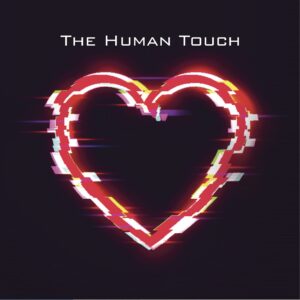SEOUL: THE HUMAN TOUCH
B2 Gallery Naeil, 3, Saemunan-ro 3-gil, Jongno-gu
SEOUL
dal 16 al 28 settembre 2022
B2 Gallery Naeil, 3, Saemunan-ro 3-gil, Jongno-gu
in collaboration with: Stefania Carrozzini Gallery Venice | Milan | Ital
curated by Stefania Carrozzini
Milena Barberis – Rosaspina Buscarino – Stefania Carrozzini
Kentaro Chiba – Akshita Gandhi – Henry Pouillon – Pia Kintrup
Buyong Hwang, Caroline Hachem-Vermette, Marcello Mazzella
Opening: September 16, 4 – 6 pm
From September 16 to September 28, 2022
(Gallery Hours: Tuesday to Sunday 11 am to 6 pm)
THE HUMAN TOUCH
Physical contact is a fundamental element of the human experience, as it constitutes an essential component of socio-emotional, cognitive, physical and neurological development since childhood. In fact, it contributes to determining the attachment style in infants and shapes emotional regulation throughout the life span. This experience was put to the test in the period of Covid, and we were all suffering from it, but above all the weakest people.The human touch is also an important form of non-verbal communication, used to convey affection and closeness in times of difficulty. When it is limited, or even absent, the so-called “hunger for human touch” can develop, which has an impact on various aspects of our health, first of all leading to an increase in levels of stress, anxiety and depression. The world we live in where virtual reality is increasingly taking over, it brings us back to our basic needs and as long as we have a body, we are subject to the laws of matter.
The archetype of the successful entrepreneur, Tim Cook, said: “I am an engineer, in love with rationality. But the most important decisions are rarely based on those criteria. The great defect of men is not to listen to their own intuition ”. What if we take back the most universal and effective process that exists to express our creativity, and our intuitions? We bring art and creation into our life and into the life of our businesses. It is what remains of specifically human in the digital age and artificial intelligence.
There are different approaches to the theme in this exhibition, almost an anthropological synthesis between phantasmagoric narratives of an imaginary human story and human beings “wanderers” perennially in search of truth, and then the body as a privileged seat for expressing transformation and perspectives of becoming.
This project was born from the desire to bring to light reflections on our way of living the relationship with the artificial dimension, in every sphere and beyond any obscurantist temptation. Feeling about this is defined as “Human” in the contemporary world, between openings and limits, in an attempt to ask questions about the fate of what makes us human and about the future of art that hasn’t adapted to the mainstream and the politically correct vision for too long. dominant time.
Art is a magnetic field with great potential for development, where it is possible to trace that unicum that makes us so different from other species. The opening to new sensory grammars and new worlds, between uncertainty and ambiguity in the relationship between natural and artificial life, poses the problem of the limit and use of technology, hoping that this is a means and not an end.
The human touch is the emblem of identity because it synthesizes the relational experience with the ontological meaning of human nature. From a contemporary perspective we are witnessing a metamorphosis and a reversal of values. Transhumanism offers a technical-scientific and technocratic vision that imagines the “how” we should improve. This perspective is supported by a superstitious belief in science as salvation (by axiom) and by an abstract contempt for our human nature: our frailty, our mortality, our self-awareness and our embodied sense of “who” we are. (distinct from “what” we are).
The technical apparatus aspires to reshape human nature as an appendix to production, from subject to object, but the human being is not made only to produce and consume. Transhumanism violates the identity of nature and its ontological specificities, relying on an anthropological engineering that has in its program the negation of the limit and the commodification of being as its aim.
So many are the questions and doubts that this exhibition wants to ask. And again: will the increasingly pervasive digitization lead to a detachment from our basic needs, which distinguish us as human beings? We are witnessing an exponential growth of technological skills, but also cognitive, ethical, behavioral and relational, as well as emotional transformations. Where human activities can be replaced by technology, the essence of humanity must be found and preserved, its incredible ability to invent and adapt, its emotional intelligence. In this sense, it is the task of art to re-establish the dialogue between human beings and changing worlds in the making.
Stefania Carrozzini

